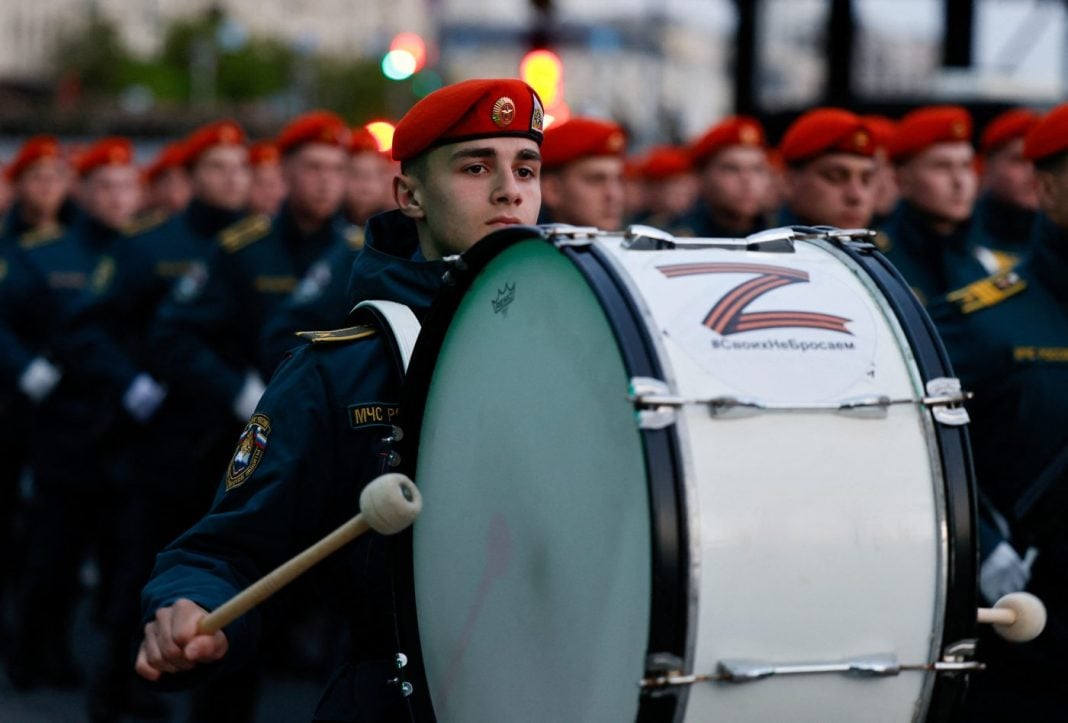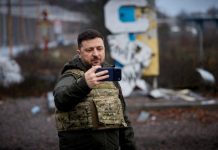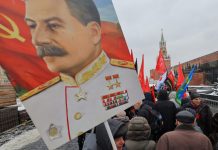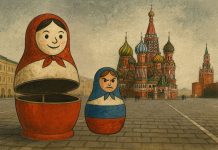Putin’s obsession with World War II victory celebrations reveal a desperation to win international acceptance.
By Elena Davlikanova, for CEPA
Vladimir Putin had every reason to hope this year’s annual military victory fiesta would mark a return from the diplomatic cold.
With a growing number of world leaders attending the May 9 Red Square parade, and Ukraine perhaps willing to move closer to the Kremlin’s war aims, Putin might have believed things were looking up.
Then the bad news began to arrive. President Donald Trump met Ukrainian President Volodymyr Zelenskyy in an eye-catching discussion in the Vatican, and on May 1, the two sides signed a critical minerals deal, which the US government said demonstrated that “the United States has skin in the game and is committed to Ukraine’s long-term success.”
There was more to come. In early May, some of the foreign leaders expected in Moscow began to feel unwell. Slovakia’s President Robert Fico cancelled events for the traditional May 1 holiday, with his own MPs speculating he may be suffering a post-traumatic response to last May’s assassination attempt. Serbia’s President Aleksandr Vučić also fell ill while in Florida and will not return to work for “several days,” his doctors said. Both men have been warned not to attend by the European Union, although neither has formally cancelled, and Fico’s allies say he will still go.
Attendance has not been helped by President Zelenskyy’s statement, following weeks of Russian attacks on civilian housing, that he cannot guarantee the safety of the event. On the nights of May 4 and May 5, numerous Ukrainian drones struck Moscow.
May 9 celebrations have been a numbers game since Russia’s all-out invasion of February 2022. The presence or absence of foreign leaders has become a regular feature of news reporting since then, and as a result, has become another battlefield for Russia, Ukraine, and the wider West.
Victory Day celebrations are more than a commemoration; they are a spectacle of power, identity, and this year aim to mark Russia’s return as a global power. In 2022, as Russian tanks crawled through Ukraine and international condemnation peaked, not a single foreign leader stood beside Putin on Red Square.
The following year, seven agreed to return — mostly composed of Central Asian leaders and the President of Belarus. In 2024, the list lengthened to nine leaders, and in 2025, the expected attendance of 17 made headlines. Most important among the would-be guests is Xi Jinping, who is expected to be joined by the leaders of Vietnam, Brazil, Venezuela, and Cuba. Five more countries, including India and South Africa, will send high-level representation.
The plans of US Secretary of State Marco Rubio have also been the subject of excited speculation among Russian state media. A Telegram channel linked to Russia’s Defense Ministry said on May 3 that Rubio may attend. That has not been confirmed, while President Trump has said he will not attend.
Russian propaganda equates its “special military operation” against Ukraine as a new Great Patriotic War and even framed “Eurofascism” as a new threat. Putin’s rhetoric remains consistent: the war against Nazism never ended, and today it takes place on Ukrainian soil. “Denazification” is code for dismantling Ukrainian sovereignty, while Ukrainian nationalism is a code word for Ukraine’s aspiration for independence.
The real novelty this year is not who sits in the stands, but who marches. For the first time, North Korean troops, which are already being versed in modern warfare in Russia’s war against Ukraine, will parade through Red Square. They are joined by units of troops from Myanmar and Vietnam.
This isn’t just ceremonial. It reflects Russia’s pivot toward Asia, and a parade that serves both memory and message. Unlike Ukraine’s 2021 parade, which featured NATO troops in a show of solidarity and the appearance of Ukrainian soldiers in the UK’s VE-Day parade in London on May 5, Moscow’s version reflects not just past conflicts but also future wars.
The celebrations will take place all over the country, including “military parades” in kindergartens, schools, and orphanages. Eight years ago, the Ministry of Defense facilitated the construction of the German Reichstag replica at full scale to stage reenactments of its 1945 storming and to also train cadets, underscoring the Kremlin’s fixation on war-era symbolism. The replica is once again being erected in a Moscow park this year.
The Kremlin builds its message around a twisted narrative of being the sole victor of the “Great Patriotic War,” conveniently excluding the 1939–41 period of World War II when the USSR and Nazi Germany were collaborators under the Molotov-Ribbentrop Pact, and divided Poland and the Baltic states between them.
And while Russia inflates its own contribution, it deliberately erases others. Ukraine, which contributed over 7 million Soviet soldiers — second only to the Russian republic — rarely receives mention. Nor does the fact that the US Lend-Lease program delivered over $11bn (about $180bn in today’s terms) in war materials to the USSR, including 400,000 trucks, 13,000 tanks, and over 14,000 aircraft.
Ukraine, meanwhile, commemorates May 8 as the Day of Remembrance and Victory over Nazism. The change, made official in 2023, signaled a break from Soviet tradition and a step toward a more European approach (see also the shift toward Western Christmas dates and celebrations). Since the full-scale invasion, there have been no parades in Kyiv — only candlelit vigils, museum exhibitions, and moments of silence.
Yet 2025’s sober marking of the day was also a reflection of isolation. Despite invitations, no major Western leaders accepted Zelenskyy’s call to join him for the anniversary.
So 80 years on, the victors of World War II are engaged in another battle: the war over memory. Russia reclaims the past to justify a militarized present, and the West to remember sacrifice. Ukraine uses it as a quiet rebellion, closer to its allies than to its would-be imperial master.
By Elena Davlikanova, for CEPA
Elena Davlikanova is a Democracy Fellow with the Center for European Policy Analysis (CEPA.) Her work is focused on Ukraine and Russia’s domestic issues and their effects on global peace. She is an experienced researcher, who in 2022 conducted the studies ‘The Work of the Ukrainian Parliament in Wartime’ and ‘The War of Narratives: The Image of Ukraine in Media.’
Europe’s Edge is CEPA’s online journal covering critical topics on the foreign policy docket across Europe and North America. All opinions expressed on Europe’s Edge are those of the author alone and may not represent those of the institutions they represent or the Center for European Policy Analysis. CEPA maintains a strict intellectual independence policy across all its projects and publications.





